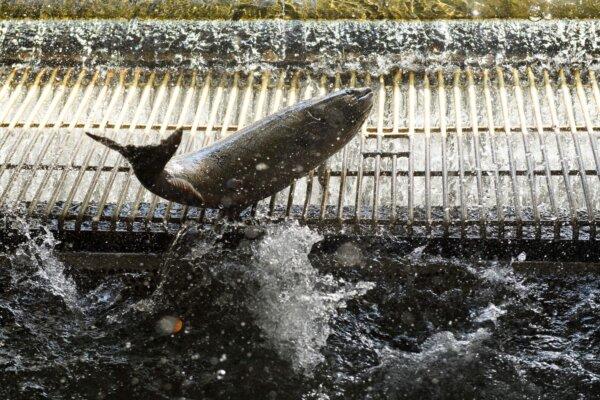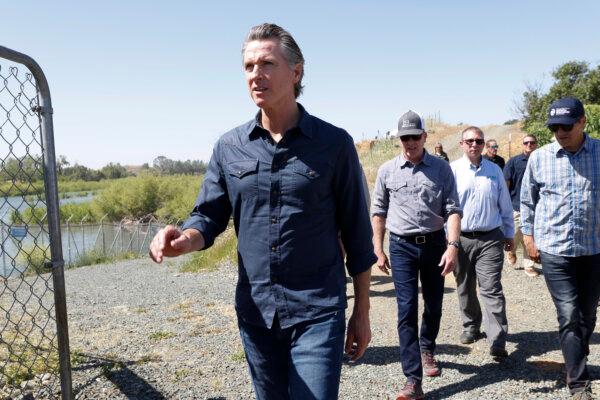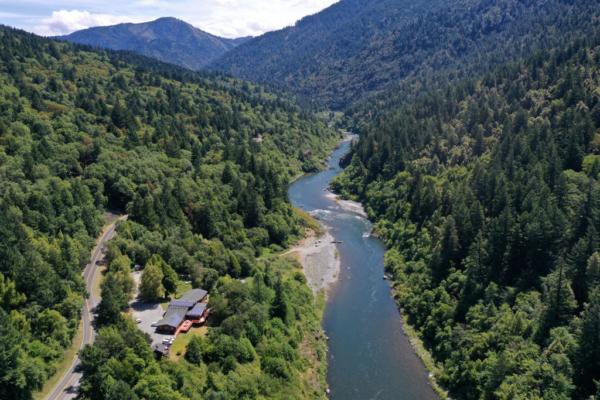California Requests Federal Disaster Aid Amid Second Year of Salmon Fishing Ban
The state is facing a loss of more than $47 million due to the closure of the 2024 salmon fishing season.
California Gov. Gavin Newsom announced on April 11 that he is seeking a federal disaster declaration because federal fishery regulators have decided to cancel all salmon fishing off the California coast for the second year in a row.
The request, submitted to U.S. Secretary of Commerce Gina Raimondo by Lt. Gov. Eleni Kounalakis on behalf of the governor, aims to provide financial assistance to affected communities while also working to protect salmon populations and support the local fishing industry, according to the governor’s office.
The state projects a loss exceeding $47 million as a result of the closure of the 2024 salmon fishing season.

The Pacific Fishery Management Council unanimously voted on April 10 to prohibit all commercial and recreational fishing of Chinook salmon throughout the year due to significant population declines. This marks the fourth time in California’s history that such a measure has been taken, following similar closures in the 2008, 2009, and 2023 seasons.
The National Marine Fisheries Service is expected to enforce the closure in May, when the typical salmon fishing season begins, according to the governor’s office.
Salmon that come from California’s Klamath and Sacramento rivers spend about three years maturing in the Pacific Ocean, where many are caught by commercial fishermen before they can return to their spawning grounds to reproduce. Those that manage to go back to the rivers will die after laying their eggs.
California’s spring-spawning Chinook salmon are listed as threatened under the state Endangered Species Act. Additionally, the winter-spawning ones are also endangered, as well as the Central California Coast Coho salmon, which have been off-limits to California commercial fishers since the 1990s.
Despite some wetter years in California recently, experts predict that the recovery of the fish population will be slow due to the species’ long maturation period.
Factors affecting the fish population in the past three to five years, in addition to the extended drought, include severe wildfires impacting spawning and rearing habitats, harmful algal blooms, and changes in ocean forage, according to the governor’s office. These factors have impacted those who depend on the fish for their livelihood.
“These factors … will have significant and lasting effects on already struggling tribal and coastal communities, as well as the businesses that rely on these fisheries,” Ms. Kounalakis said in the request.

Industries affected, including fishermen, boat operators, and restaurant owners, have expressed concerns about their financial future due to the two-year closure.
“Many people have already been struggling because of last year’s shutdown,” said Scott Artis, executive director of the Golden State Salmon Association, to the Los Angeles Times. “And this will only be one more devastating blow.”
California’s commercial salmon fishing fleet currently consists of about 460 vessels, many of which have already sought other work to sustain themselves, Artis noted. Operators of charter boats for recreational fishing will also need to find alternative businesses for another year.
“Decades of extreme climate conditions have significantly impacted our salmon populations, and we are taking steps to address this crisis in the long term,” said Gov. Newsom in a statement on Thursday. “We will continue collaborating with the Biden Administration and Congress to ensure that California’s fisheries and affected communities receive support during this crucial period.”
Over the past three years, the Newsom administration and the California Legislature have invested over $800 million in state funds to protect and restore salmon populations.
In January, the governor launched a plan to revive the population through a variety of habitat restoration projects in the Sacramento-San Joaquin Delta, McCloud River, and wetland and meadow projects across the state.

Furthermore, the state plans to remove four dams from the Klamath River, reopening nearly 400 miles of previously blocked river habitat for salmon, steelhead, lamprey, and other native fish species. One dam was demolished last September, and the rest are set for removal.
In early March, roughly 830,000 young Chinook salmon died from trauma due to sudden pressure changes after being released above the Iron Gate Dam in the Klamath River, according to the California Department of Fish and Wildlife.
The disaster was not caused by poor water quality, the agency clarified, despite concerns earlier in the year when the century-old Copco Lake, near the Oregon border, was drained in January as part of the dam removal projects, leading to sediment flowing into the Klamath River.
The Associated Press contributed to this report.





